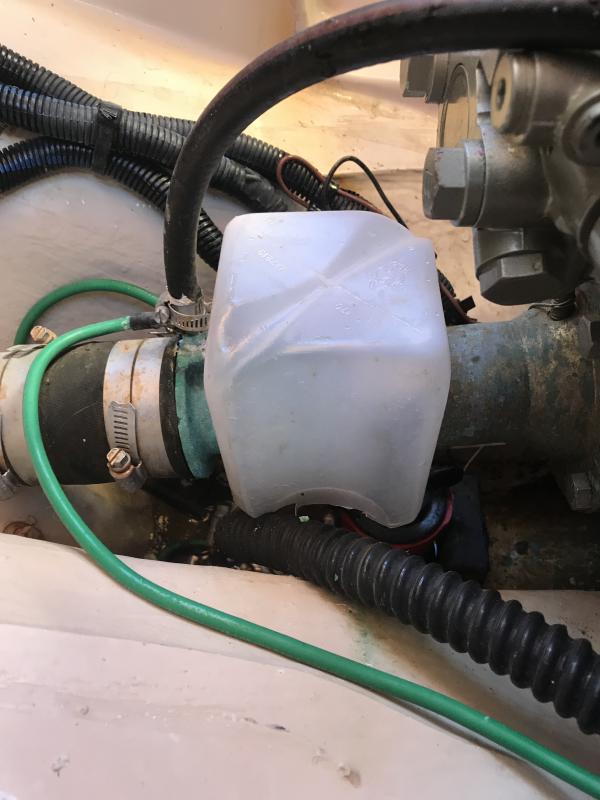wa7pug":2rl3pggc said:
When we got the survey and bought the boat, one of the survey comments was that shaft seal was too tight and recommended loosening it …
1) Volvo Penta did not use a dripless shaft seal in 2017? Dripless seal technology has been around for a while ... Do you have any idea what shaft seal (Mfg/model – any data?) was used?
2) IF it is supposed to drip, is there any idea what the optimum drip rate should be? I like a dry bilge but also do not want to have the seal go out half way to SJI.
"The more I know, the less I understand ..."
Picture
The Packing Gland
The packing gland is the watertight connection between the turning propeller shaft and the hull of the boat. This connection gets hot from friction and therefore must be cooled with water. Typically there are products to accomplish the cooling. One, is a dripless seal where water comes in and flows out in a closed system. The second one, is the decades old traditional one of a packing gland. This type is on our Ranger Tug. This photo shows the two parts of the packing gland: the larger compression nut and the thinner locking nut with the the exposed threads. The gland is manually tightened to so no or very, very little water drips when the prop shaft is still and drips about 4 to 8 drips per minute when the shaft is turning. A wet bilge is normal and expected in this system. I have had both systems. The dripless system is nearly maintenance free as long as water is circulating through the system. Clogs can happen in the raw water system and the failure is quick and the fix is expensive.
The traditional packing gland takes no minimal maintenance. Simply ensure the right number of drips is happening and adjust according. When the adjusting nut cannot be tightened any further, the wax impregnated stuffing is replaced. Adjusting the packing gland and replacing the stuffing can be down by the owner. The tools needed to adjust the packing gland are two large adjusting wrenches. These are found in the plumbing department at hardware stores. Steps to adjust the packing gland:
Loosen the thin locking nut by turning toward the port side of the boat. Use a pipe over the handle of the wrench if it will not move. If that does not work, soak the threads with Liquid Wrench or any penetrating oil for several hours or even a day.
Tighten the large compression nut by hand and then a very short turn with a wrench. I have found turning the length of one notch or shoulder on the nut is more than adequate.
Tighten the locking nut.
Picture
Sent from my iPhone using Tapatalk

